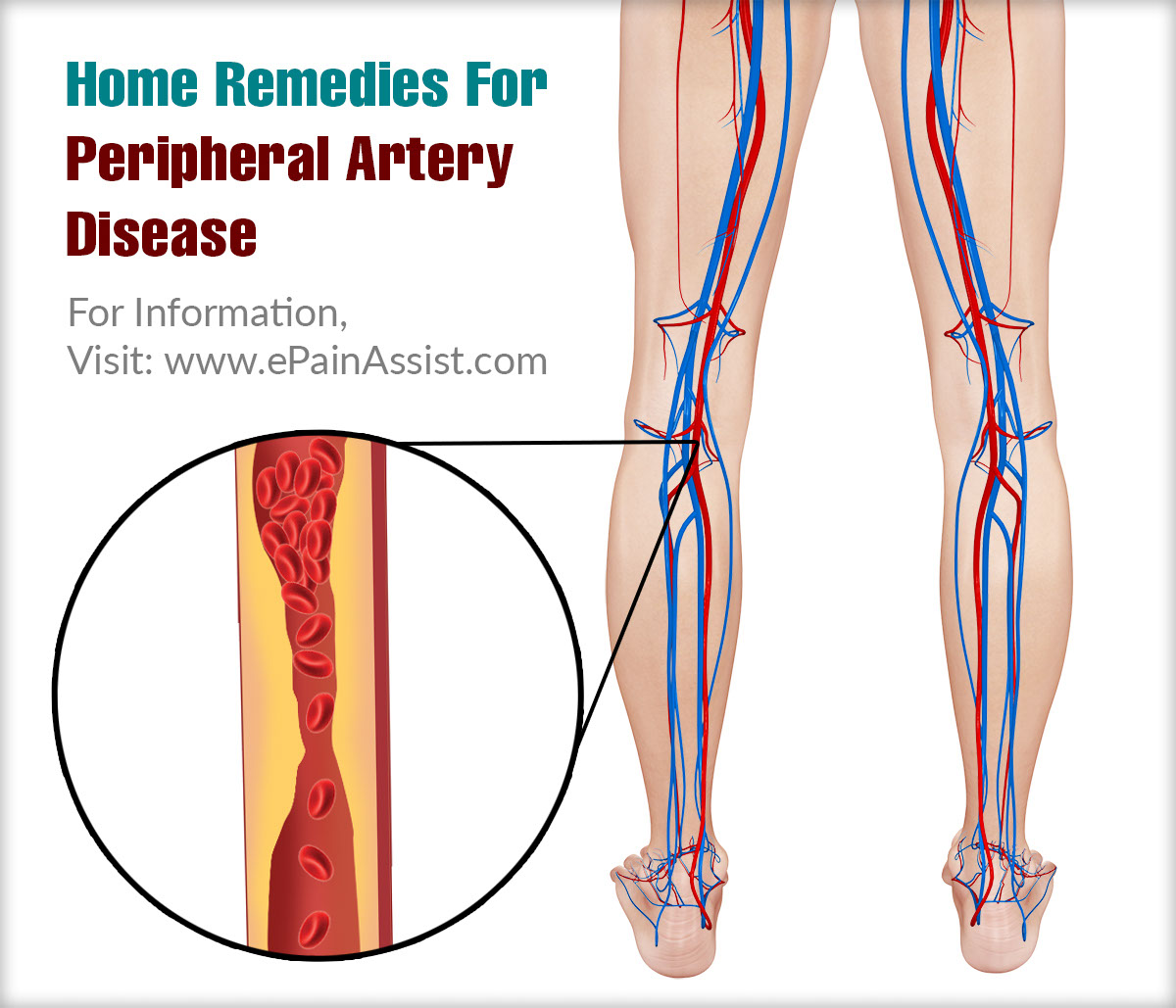Over eight million American citizens suffer from the condition of peripheral artery disease.(1)
Smoking increases the chances of peripheral artery disease development by 400 percent(2)
Peripheral artery disease is a type of disorder occurring in the arteries of one’s circulatory system. Arteries refer to the blood vessels, which are responsible to carry oxygen and blood rich in essential nutrients to different body parts from the heart. PAD mainly takes place in the arteries responsible to carry blood to the legs and arms.
If a person suffers from peripheral artery disease, his/her arteries block or narrow slowly when plaque builds up within the artery walls. Plaque consists of cholesterol, excessive fat, and other substances, which float from the bloodstream, like calcium, protein, and inflammatory cells. Whenever the arteries block or narrow, blood fails to pass through to nourish tissues and organs.(3)

Home Remedies To Deal With Peripheral Artery Disease
Alternative Medicines Or Supplements: Depending on your condition related to peripheral artery disease, you may try ginkgo as alternative medicine or supplement. The supplement has blood-thinning effects, which help people suffering from intermittent claudication related to peripheral artery disease to walk a relatively long distance with less possible pain.
Many people may easily manage the symptoms related to peripheral artery disease and its progression by following certain lifestyle changes, which are-
Walk And Exercise Plan: Success of peripheral artery disease treatment depends mainly on how far a patient can walk or do exercises without experiencing any pain. The right type of exercise helps in conditioning the muscles to use the oxygen supply efficiently. Your doctor will help you in developing a proper exercise plan and may refer you to a claudication exercise-based rehab program.
Stop Tobacco Or Cigarette Smoking: Tobacco or cigarette smoking leads to damage and constriction of your arteries. Indeed, this is a prime risk factor to develop peripheral artery disease and makes your condition worse. If you smoke, you should make sure to quit it to reduce your complications or risk. However, if you experience trouble quitting smoking on your own, you may discuss with your doctor to cease your smoking habit based on certain medications.
Avoid Cold Medications: Over-the-counter types of cold medications contain pseudoephedrine, which constricts the blood vessels and increases the symptoms related to peripheral artery disease.
Have A Healthy Diet: You should follow a heart-healthy diet plan, which contains low saturated fat to control your cholesterol levels and blood pressure, as both of them contribute towards atherosclerosis.
Take Proper Care Of Your Feet And Legs
Along with the aforementioned lifestyle changes, you should make sure of taking proper care of the feet. People suffering from peripheral artery disease, especially the diabetic patients remain at high risk related to healing of injuries and sores on the feet and lower legs. Poor circulation of blood also prevents proper healing of wounds and increases the risk related to certain infections. Hence, you should follow the mentioned pieces of advice for caring your feet-
- Wash the feet daily and dry them thoroughly after you complete your exercise. You should also moisturize the feet to avoid cracks, which result in infection. However, avoid moisturizing between the toes, as it leads to fungal growth.
- You should make sure to wear properly fitted shoes with thick and dry socks.
- If you identify any type of fungal infection on your foot, you should treat it immediately. To stay safe, you should inspect the feet daily to check any injury.
- You should take proper care at the time of trimming the nails.
- Consult with your doctor at the first sign or symptom related to any sore or skin injury.
- Consult a reputed foot doctor i.e. podiatrist to treat corns, bunions, and calluses.(4)
Conclusion
By following the aforementioned home remedies, you will expect to recover from the condition of peripheral artery disease in a relatively less period.
- https://www.ahajournals.org/doi/pdf/10.1161/circulationaha.107.736108
- https://www.nhlbi.nih.gov/health-topics/peripheral-artery-disease
- https://my.clevelandclinic.org/health/diseases/17357-peripheral-artery-disease-pad
- https://www.mayoclinic.org/diseases-conditions/peripheral-artery-disease/diagnosis-treatment/drc-20350563
Also Read:
- Peripheral Artery Disease: Causes, Symptoms, Treatment, Do’s & Don’ts
- What is Peripheral Artery Disease: Causes, Signs, Symptoms, Diagnosis
- Treatment for Peripheral Artery Disease: Medications, Surgery, Exercise Program
- Recovery Period of Peripheral Artery Disease & its Prognosis|Diet, Exercise, Yoga for Peripheral Artery Disease
